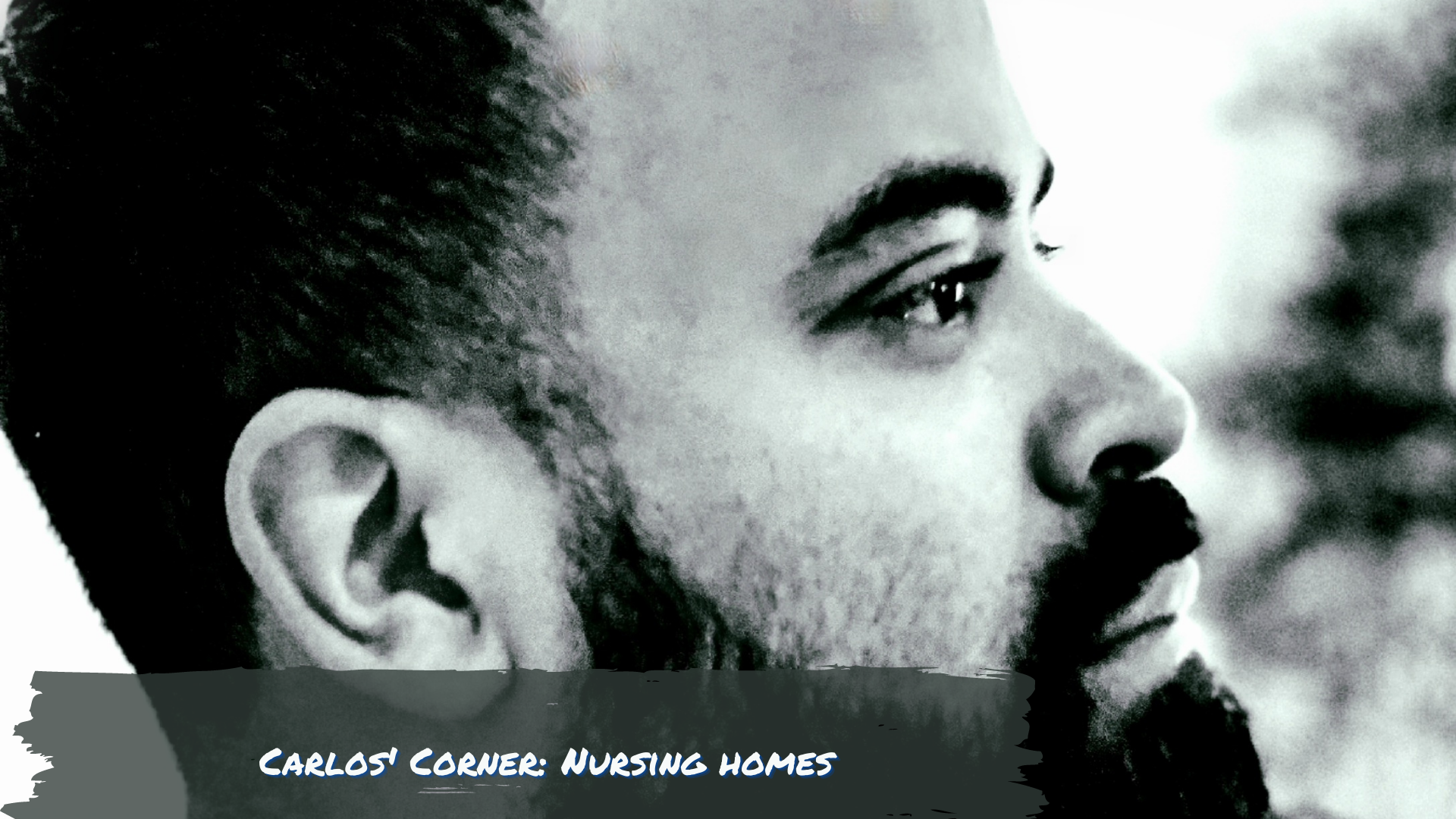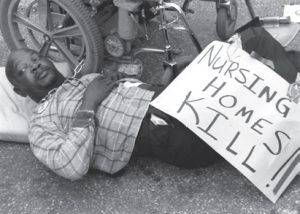
cc nursingv2
 Photo Credit: Tom Olin
Photo Credit: Tom Olin
The image above shows a man chained to his wheel chair laying on the ground, with a sign that says “Nursing Homes Kill”. You might think that this image was taken within the past year during this unprecedented coronavirus pandemic. In fact, this image was taken more than 50 years ago when people decided that they had enough of the institutionalization of people with disabilities and decided it was time to make their voices heard. For people with disabilities, a nursing home was anything but freedom. Medical institutional systems had created long standing bias that forced more people with disabilities to be institutionalized as opposed to being supported in the community.
The COVID-19 pandemic exposed what existed for decades. Inadequate nursing home oversight and ineffective infection control procedures have plagued the nursing home industry for far too long. More importantly, people with disabilities and those who need long term care express losing choice and independence as well as their dignity and worth — all while institutionalized. According to the American Geriatrics Society [moving into a nursing home] can lead to depression, ranging from mild to chronic, in approximately 40 percent of nursing home residents. Nursing home patients lose one of the fundamentals of human life — connection to community and a sense of belonging. This is absolutely preventable and demands attention and change.
In light of the New York State Attorney General’s report which reveals that roughly 15,000 new Yorkers who resided in a nursing home died of COVID-19, it is critical that we start looking at how long term care as a whole is reimagined. People aging, with disabilities or chronic medical conditions, demands that we invest in community care. New York must reimagine long term care with a focus on home and community-based long term care services and invest in improving and enhancing home care for New Yorkers who need it. Home care in the community should be seen as a viable career and not a second hand job that competes with the salaries of the fast food industry. Long term care must be accessible, inclusive and community-based so that our aging population as well as those with disabilities and chronic medical conditions have the best options to remain in the community, supported and independent!





